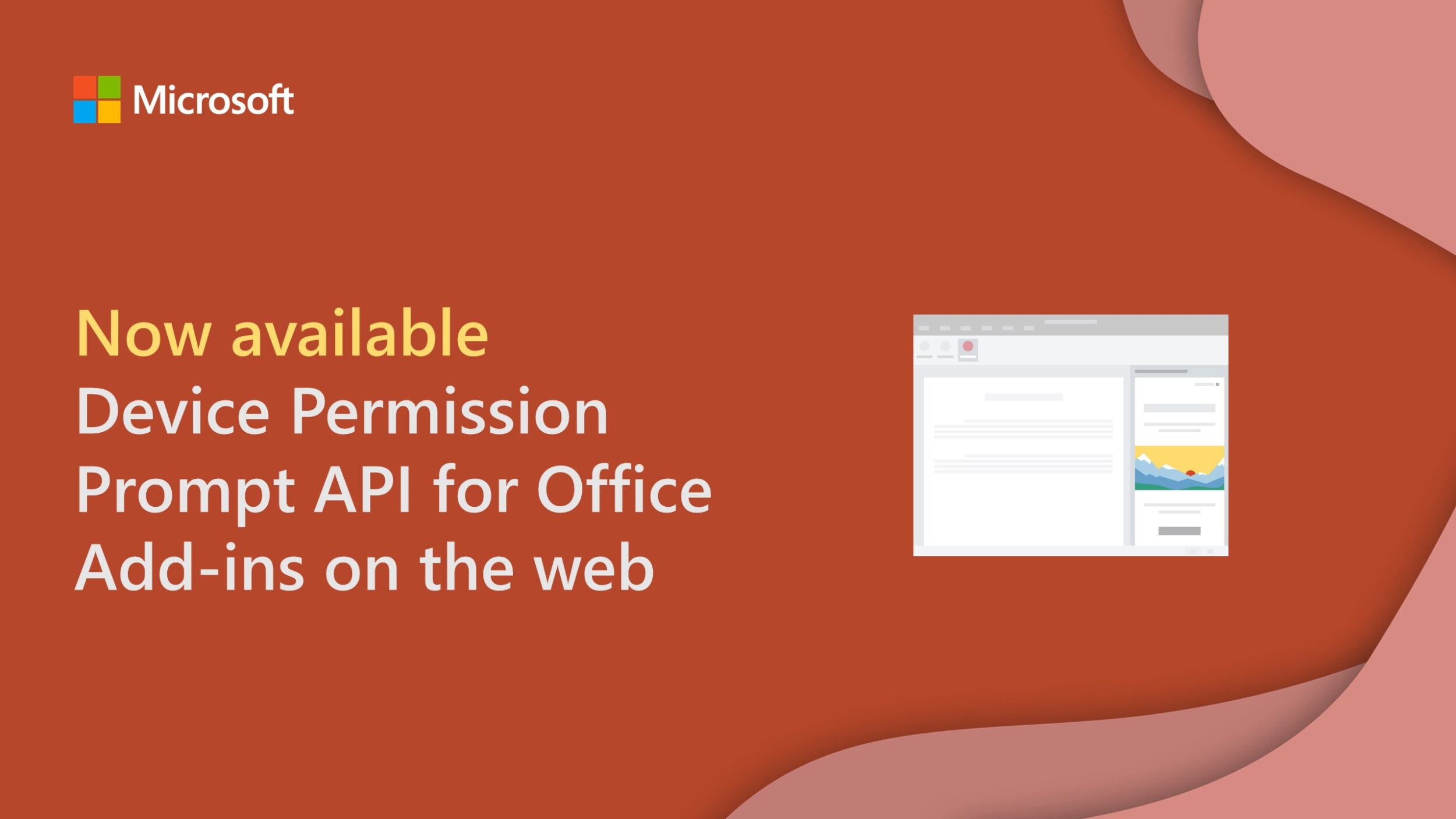Device Permission Prompt API available for Office Add-ins on the web

- Office Add-ins Device Permission Prompt API
- Microsoft now requires Office Add-in developers to prompt users for permission to access their device capabilities for certain Office applications on the web.
- Supported Office Applications
- Web versions of Microsoft Word, Excel, Outlook, and PowerPoint running in Chromium-based browsers like Microsoft Edge or Google Chrome, as well as the new Outlook for Windows.
- User's Device Capabilities
- Includes camera, geolocation, and microphone access.
- Implementation of Device Permission API
- Developers can implement the Device Permission API in their add-ins to prompt users for permissions.
- Impact
- This change affects add-ins running in Office on the web on Chromium-based browsers; it does not impact add-ins running on other platforms or browsers.
- Permission Dialog
- The Device Permission API shows a dialog to the user with the add-in name, required device capabilities, and options to Allow, Allow once, or Deny permission.
- Permission Storage
- User permissions are stored in the cache to prevent repeated prompts from the same add-in. Changing permissions requires add-in reinstallation or clearing browser cache.
- Outlook Add-ins
- Event-based activation add-ins in Outlook do not inherit browser permissions and do not support the Device Permission API.
- Further Information
- More details on how users are prompted for permission can be found in the "View, manage, and install add-ins for Excel, PowerPoint, and Word" documentation.
- Additional Resources
- Office Dev Center, Privacy and security in Office Add-ins.
Thank you for summarizing the content!